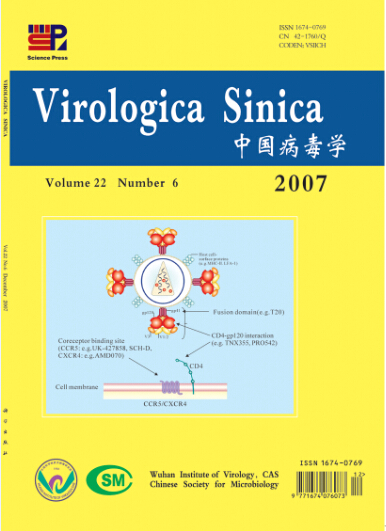Yan JIANG.Development and Challenge of HIV/AIDS Testing Laboratory Network and Quality Assurance System in China .VIROLOGICA SINICA, 2007, 22(6): 434-442.
Citation:
Yan JIANG.
Development and Challenge of HIV/AIDS Testing Laboratory Network and Quality Assurance System in China .VIROLOGICA SINICA, 2007, 22(6)
: 434-442.
Development and Challenge of HIV/AIDS Testing Laboratory Network and Quality Assurance System in China
-
National AIDS Reference Laboratory of National Center for AIDS/STD Control and Prevention, Chinese Center for Disease Control and Prevention, Beijing 100050, China
-
Corresponding author:
Yan JIANG, jiangyan03@263.net
-
Received Date:
10 September 2007
Accepted Date:
10 October 2007
Available online:
01 December 2007
Fund Project:
MOH Program on Applied Research in the Prevention and Treatment of AIDS WA 2003-17
-
Abstract
This paper describes the development and challenge of HIV/AIDS testing laboratory network and quality assurance system in China. At present, the HIV/AIDS testing laboratories includes three classes, the National AIDS Reference Laboratory, HIV/AIDS confirmatory laboratories and HIV/AIDS screening laboratories. All of them are accredited by the health authorities, and each class of laboratories take charge of their function strictly according to the “National Management of HIV/AIDS Detection (2006)”. A complete quality assurance and quality control system for HIV/AIDS testing has been developed, which includes technical training, strict laboratory monitoring and approval, examination or proficiency testing on HIV/AIDS detection, and quality evaluation and supervision of HIV/AIDS diagnostic kits. Besides conduct the routine anti-HIV antibody test, more and more laboratories began to conduct other tests, such as CD4+ T lymphocyte cell counting, HIV viral load, HIV DNA PCR, genotyping, drug resistance, and HIV-1 recent infection test. The primary challenges faced by the HIV/AIDS testing laboratory network are in the areas of laboratory management and quality control. For example, the provincial PT program is inefficient, the internal quality control is conducted perfunctorily, personnel training can not met the needs of the workplace, which need to be improved.
-

-
-
References
-
Chinese Center for Disease Control and Prevention. 2004. National Guideline for Detection of HIV/AIDS.
-
Chinese Center for Disease Control and Prevention. 2003. National Guideline for Detection of HIV/AIDS (draft).
-
Chinese Medical Association. 2005. Guidelines for Diagnosis and Treatment of HIV/AIDS in China.
-
Mellors J W, Munoz A, Giorgi J V, et al.1997. Plasma viral load and CD4+ lymphocytes as prognostic markers of HIV-1 infection. Ann Intern Med, 126: 946-954.
doi: 10.7326/0003-4819-126-12-199706150-00003
-
Ministry of Health of P. R. China. 1997. National Guideline for Detection and Management of HIV/AIDS.
-
Ministry of Health of P. R. China. 1990. National Guideline for Detection and Management of HIV/AIDS (draft).
-
Ministry of Health of P. R. China. 2006. National Management of HIV/AIDS Detection.
-
Ministry of Health of P. R. China. 2004. National Management of HIV/AIDS VCT.
-
Quinn T C, Brookmeyer R, Kline R, et al. 2000.Feasibility of pooling sera for HIV-1 viral RNA to diagnose acute primary HIV-1 infection and estimate HIV incidence. AIDS, 14: 2751-2757.
doi: 10.1097/00002030-200012010-00015
-
Taylor J M, Sy J P, Visscher B, et al.1995. CD4+ T-cell number at the time of acquired immunodeficiency syndrome. Am J Epidemiol, 141: 645-651.
doi: 10.1093/oxfordjournals.aje.a117480
-
The Standing Committee of the National People's Congress of P. R China. 2004. Law of Communicable Disease for Treatment and Prevention of the People's Republic of China.
-
The State Council of P. R. China. 2006. China Action Plan for AIDS Control and Prevention (2006-2010).
-
The State Council of P. R. China. 2006. Regulation of AIDS for Treatment and Prevention.
-
Xiao Y, Jiang Y, Feng J, et al.2007. Seroincidence of recent human immunodeficiency virus type 1 infections in china. Clin Vaccine Immunol, 14: 1384-1386.
doi: 10.1128/CVI.00356-06
-
Yarchoan R, Venzon D J, Pluda J M, et al.1991. CD4 count and the risk for death in patients infected with HIV receiving antiretroviral therapy. Ann Intern Med, 115: 184-189.
doi: 10.7326/0003-4819-115-3-184
-
Zhang Q, Pan P L, Deng H, et al.2006. Study on the use of dried blood spot in sequencing and subtyping HIV-1 DNA genome. Chin J Epidemiol, 27: 798-802.
-
Proportional views

-











